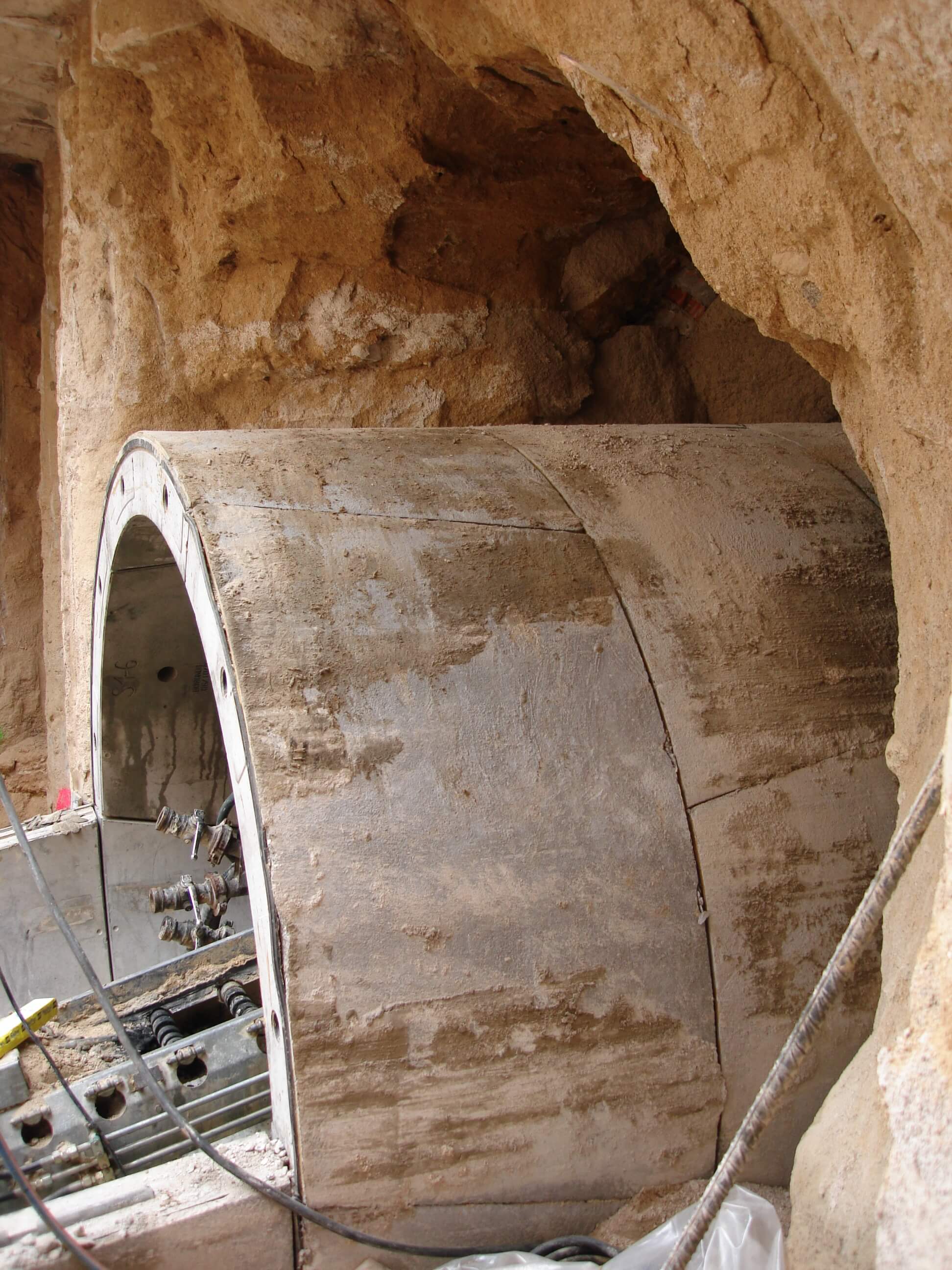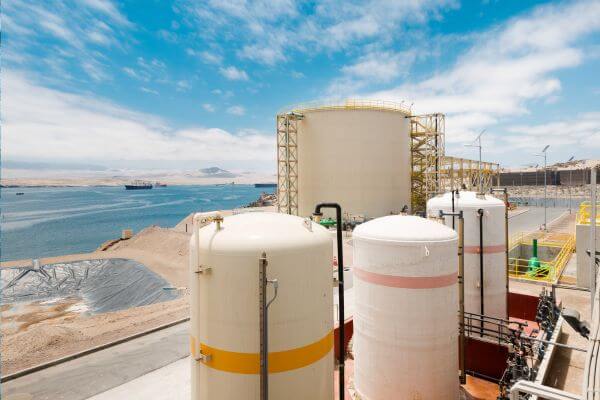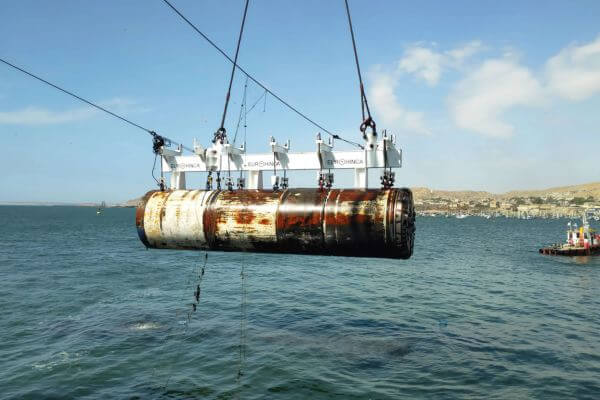
Efficient catchments and returns for aquaculture: challenges and microtunneling solutions
Modern aquaculture - from Mediterranean sea bream hatcheries to huge Atlantic salmon farms - relies on an influx of
Eurohinca (Europea de Hincas Teledirigidas, S.A.), especialista SIN zanja desde 1996 — 14 tuneladoras y >120 km ejecutados.
Diseñamos y ejecutamos captaciones de agua de mar with microtúnel (MTBM), HDD y Direct Pipe — caudal objetivo, mínima turbidez y cumplimiento ISO 9001/14001/45001. Ver también submarine emissaries.

En Eurohinca somos especialistas en la construcción de sistemas de seawater catchment aplicando tecnologías seguras, sostenibles y adaptadas a cada entorno. Estas soluciones son esenciales para proyectos de desalación, submarine emissaries y urban supply systems.
Con más de 20 años de experiencia, garantizamos estructuras resistentes que aseguran el flujo continuo y controlado del agua captada.
Nuestros sistemas están diseñados para minimizar el impacto ambiental, al mismo tiempo que optimizan la eficiencia de los procesos de filtrado y transporte. Gracias a técnicas como la pipe ramming and the horizontal directional drilling, logramos ejecutar obras en condiciones complejas, garantizando la durabilidad y seguridad de las instalaciones.
The Programa de Naciones Unidas para el Medio Ambiente (PNUMA) subraya la importancia de gestionar de forma responsable los recursos hídricos marinos, especialmente en proyectos de desalación y suministro urbano.

Los cruces de Áreas Marinas Protegidas (AMP) requieren tecnologías SIN zanja que aseguren un impacto ambiental mínimo, precisión en el trazado y un control riguroso de la excavación. Los métodos empleados —microtúnel, hinca de tubería y Direct Pipe®— permiten ejecutar conducciones desde tierra sin intervenir físicamente en el fondo marino dentro de la zona protegida. Este servicio se define mediante los siguientes parámetros técnicos:
• Aplicaciones principales: Cruces subterráneos bajo AMP, LIC marinos, ZEPIM, reservas litorales y zonas de especial sensibilidad ecológica para instalar conducciones de captación, emisarios, retornos, líneas de proceso o servicios industriales sin afección directa al ecosistema marino.
• Métodos constructivos adecuados:
– Microtúnel teledirigido: Ideal para alcanzar la zona objetivo sin abrir zanja en el fondo marino.
– Pipe jacking: Para diámetros estructurales y trazados profundos en terrenos saturados.
– Direct Pipe: Para instalar tubería de acero definitiva en un solo empuje con alta estabilidad del frente.
La elección depende del diámetro, alcance, profundidad y condiciones ambientales.
• Razón ambiental para emplear métodos SIN zanja: El túnel o microtúnel se ejecuta desde tierra, sin intervenir en la lámina de agua, evitando alteración del hábitat, retirada de sedimentos, generación de turbidez o afección a flora y fauna protegida.
• Condiciones del terreno y entorno litoral: Terrenos aluviales, arenas saturadas, limos y depósitos costeros. Se consideran elementos clave: permeabilidad, estabilidad del frente, presión de agua, dinámica litoral y compatibilidad con la preservación del ecosistema.
• Geometría, cota y trazado: Se diseña la conducción para profundidades suficientes que garanticen separación efectiva del ecosistema marino, evitando afección a praderas de Posidonia, zonas de cría, arrecifes o fondos sensibles.
• Diámetros y materiales: Tuberías de acero, PEAD o hormigón para conducciones no visitables. En grandes diámetros pueden emplearse túneles visitables revestidos con dovelas.
• Longitudes típicas: Desde decenas hasta varios cientos de metros, dependiendo de la distancia necesaria para atravesar el área protegida sin intervenir en su superficie.
• Requisitos de obra civil en tierra: Pozos o plataformas de ataque situados fuera de los límites protegidos, planta de lodos, equipos de bombeo, accesos para maquinaria y zonas de acopio y soldadura de tuberías.
• Integración con obra marina fuera de la zona protegida: El punto de conexión del microtúnel con la conducción marina se ubica fuera de los límites del área protegida, verificándose mediante ROV o buceo profesional.
• Control ambiental y normativa:
– Cumplimiento de regulaciones específicas de AMP y evaluaciones ambientales previas.
– Planes de vigilancia ambiental durante la ejecución.
– Estrategias de reducción de emisiones, turbidez y afecciones acústicas.
• Control de calidad y verificación: Monitorización de presión de cámara, empujes, guiado, volumen excavado y alineación. En obra marina, verificación final mediante ROV del punto de conexión y estabilidad de la conducción.
Hemos ejecutado captaciones de agua de mar en proyectos internacionales de infraestructuras hidráulicas, cruces de áreas marinas protegidas y desagües de presas.
Conoce más en nuestra sección de obras ejecutadas.
Escríbenos y te ofreceremos la mejor solución técnica y sostenible.
Descubre nuestras noticias sobre captación de agua de mar y desalación, donde compartimos casos reales, innovaciones y experiencias en proyectos internacionales.

Modern aquaculture - from Mediterranean sea bream hatcheries to huge Atlantic salmon farms - relies on an influx of

Tunnels play an essential role in water supply and desalination systems, enabling the efficient and efficient transport of water from one place to another.

Submarine outfalls are essential infrastructures in effluent management, allowing the discharge of treated water into the open sea.
En esta sección respondemos a las preguntas más habituales sobre captaciones de agua de mar. También puedes visitar nuestra sección de preguntas frecuentes para más información sobre otras técnicas y aplicaciones.
A seawater catchment is a system that extracts water from the ocean for various uses. It is used in processes such as desalination to convert salt water into drinking water, cooling of industrial equipment and agricultural irrigation, among others.
The system uses pipes and pumps to extract water from the sea and transport it to a treatment point. Once there, the water passes through filters that remove sediment and other contaminants before being used or treated for different applications.
Seawater harvesting employs technologies such as filters that remove large particles and sediments, pumps that extract water efficiently, and pipelines designed to resist saltwater corrosion.
Seawater is an abundant and almost inexhaustible source, which helps reduce pressure on freshwater sources. In addition, desalination systems can be adjusted to meet different demands, making this technology versatile and useful in a variety of situations.
Challenges include corrosion of equipment due to saltwater, the need for regular maintenance to clean filters and prevent clogging, and the potential impact on the marine environment, which must be carefully managed.
To ensure sustainability, the system is carefully designed to minimize environmental impact. In addition, efficient energy-saving technologies are used and constant monitoring is carried out to ensure that the system functions properly without harming the marine ecosystem.